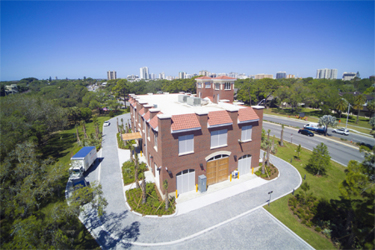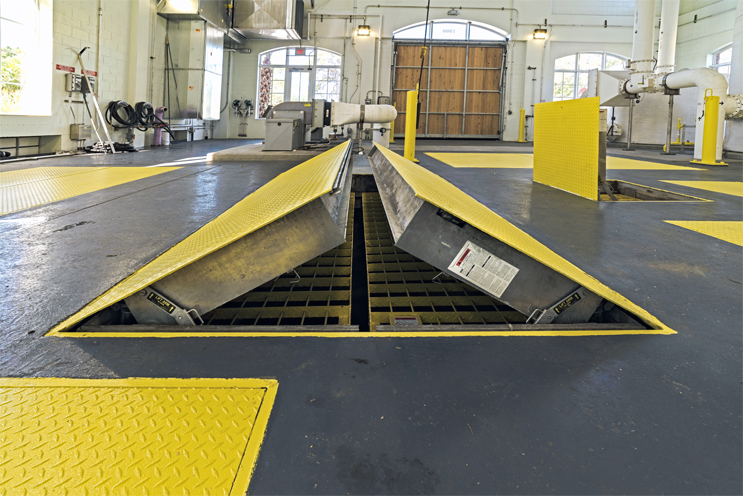Sarasota Gets A 'Lift' In Fight Against Sewage Leaks
By Thomas Renner

Sewage spills in Florida are frequent. A newspaper report in 2019 found deteriorating sewers released 1.6 billion gallons of wastewater within a decade in communities throughout the state. Daytona Beach, Jacksonville, and even tony Boca Raton, labeled the “Beverly Hills of Florida” with its yacht clubs and fancy restaurants, were among the regions impacted by failing systems.
Aging and deteriorating infrastructure contribute to the mess, as do hurricanes. In 2017, more than 28 million gallons of wastewater spilled across the state in the wake of Hurricane Irma, a Category 2 storm.
Sarasota, which was among the areas hit hard by Hurricane Irma, saw issues even before the storm blew into town. Lift Station 7, a wastewater facility that came online in the 1980s, showed signs it had reached the end of its useful life by 2004. That year, more than 500,000 gallons spilled into the Hudson Bayou, a tributary to Sarasota Bay. In January 2005, another 500,000 gallon spill enraged residents.
Late in 2000, Lift Station 87 came online to replace Lift Station 7. It will manage about 33 percent of the city’s wastewater flow, with a maximum capacity of 9.5 million gallons per day. The new structure is built above-ground to withstand a Category 3 storm surge. Other improvements include new sewer lines, replacement of aging water mains to improve water pressure, and reclaimed water mains to provide the area an environmentally friendly source of irrigation water.
The city’s path to get its new lift station, however, was torturous — and expensive. When the city approved the relocation of Lift Station 7 in May of 2008, the city estimated the cost at $8.5 million. A change in the design of the building, construction delays, challenges for contractors, and lawsuits proved costly. Sarasota news outlet YourObserver.com reported last year the city anticipates spending $67 million on the facility — more than eight times the original projection.

Lift Station 87 was built above ground to withstand a Category 3 storm surge. (Photo by Charlie Fernandes)
A Change In Plans
Several options were considered for new lift station, but relocating the lift station to Luke Wood Park was selected. City officials thought the site offered fewer construction problems and lower costs.
Westra Construction Corporation was awarded a $9.6 million construction contract in February of 2011, and AECOM served as the project engineer. Work began in June, with an estimated completion date of 2012.
In August, a contractor accidentally broke a 14-inch force main, causing an estimated 200-gallon sewage spill into the Hudson Bayou. AECOM and Westra were fired shortly thereafter. Seven years after the first 500,000 gallon sewage spill into the Hudson Bayou, the city was no closer to fixing the problem.
McKim & Creed replaced AECOM in August 2013 and performed an extensive evaluation of the project. The new engineering firm made two important changes to the plan.
It redesigned the facility from an underground structure to an above-ground facility that could withstand hurricanes and played a huge role in the cost escalation. The most significant change was digging a microtunnel below the Osprey Avenue Bridge that needed to go deeper than originally believed.
“The invert elevation of the 36-inch main was lowered 8 feet to avoid interference with an existing bridge abutment and to minimize potential impacts to the environment during drilling,’’ McKim & Creed wrote on its website. “Phase 1 also included a review of the previous lift design and recommendations to increase reliability, improve worker safety, and minimize operational issues.”
Engineers were most concerned about the structural integrity of the bridge, according to SRQ Magazine, because of its soft silt base. City officials felt the bridge might have collapsed in the original microtunneling plan, according to the magazine.
A Path Forward
The microtunneling process finally began in January of 2017. “This is where the rubber meets the road,’’ Mitt Tidwell, Sarasota’s Utilities Director at the time, told the Sarasota Herald-Tribune. “We scheduled this work first to protect the city’s investment and minimize risks.” The process included the closure of the Osprey Avenue Bridge in Sarasota in July of 2016. The bridge reopened in June 2017.
After workers dug out the 670-foot microtunnel, other teams began work on the new lift station in October of 2017. Work included the demolition of existing structures and the construction of a state-of-the-art odor control facility. The fully-enclosed building minimizes the impacts of routine operation and maintenance, according to the city. An additional 560-foot microtunnel under Luke Wood Park connects to the lift station and the microtunnel under the Osprey Avenue Bridge.
The third phase of the project included pipeline installation and diverting flow from Lift Station 7 to Lift Station 87. New water mains, reclaimed water mains, and full roadway restoration were also included. The new lift station structure was completed in November 2020. Lift Station 7 was decommissioned in March 2021. Gravity sewer connections for residents is expected to be completed by July 1.
Withstanding Storms
Besides the deeper microtunneling, the above-ground lift station contributed to the extended timeline and cost escalation.
The station was designed to withstand the impact of a Category 3 hurricane. The station serves Sarasota Memorial Hospital, and the design will allow the hospital and other critical designated storm shelters to remain in operation after a storm event.
The building includes HVAC and equipment exhausts in the towers, and the two-story building was built over a new, 50-foot-deep wet well. “We’ve spent the past year constructing the equivalent of a five-story building underground and below sea level,’’ Sarasota Utility Director Bill Riebe said in a press release in August 2019. “Construction of the wet well and connection of new, micro-tunneled 36-inch gravity sewer to the wet well piping has been technically complex.”
The project included the installation of 15 floor doors from BILCO, the manufacturer of specialty access products. The doors, which were installed by PCL Construction, were manufactured in a wide range of sizes and allow access to vaults, pipes, and pumps in the wet well. The floor doors are constructed with a channel frame for H-20 loading, and withstand the force of heavy equipment vehicles.

BILCO doors will allow access to pumps and vaults for workers at the lift station. (Photo by Charlie Fernandes)
PCL ordered the doors through Building Specialties of Bradenton, which worked with them to manufacture special sizes. “BILCO was selected because they had the capability to make very large hatches,’’ Westphal said. “Competitors had difficulty building the sizes we needed and meeting the loading requirements. The ability to make them that large and meet those requirements was essential. They were prepared because they build doors like this frequently and they knew how to do it.”
Reflecting In Sarasota
While the project is complete, Sarasota is hardly in a celebratory mood. Commissioner Hagen Brody told the Herald-Tribune last September the city would look at the entire process. “I think we need to own up to it and explain to the community what happened, so that we and future commissioners don’t have the same problem or learn from those mistakes.”
City residents and officials became frustrated with the project duration and costs. Some questioned the location in Luke Wood Park, others wanted to scrap it altogether, and there were numerous administrative changes in the Sarasota government throughout the ordeal. Susan Chapman, a City Commissioner who fought for the project early on, said in SRQ Magazine she doubted the project would ever be completed. “Am I confident it will be finished in my lifetime? No, I am not,’’ she told the magazine.
The timeline was long, the project was elaborate, and the challenges were complicated. Now, finally, Sarasota has the lift station it wanted, and will serve the community for many years to come.
Thomas Renner writes on building, construction, engineering, and other trade industry topics for publications throughout the United States.
